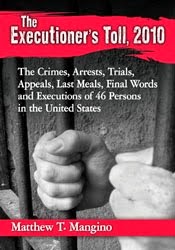An Oklahoma inmate who was supposed to be executed Tuesday instead died of a heart attack after the execution was botched, wrote Mark Berman of the Washington Post.
Clayton Lockett’s execution Tuesday night was halted after about 20 minutes due to an issue with a vein, the Associated Press reported. Not long after Lockett was deemed unconscious from the first of three drugs, he began “writhing on the gurney,” according to the Associated Press. He was declared dead 43 minutes after the execution began.
If Lockett's death was not the expected 20th execution of 2014, what was it? It certainly was not death by natural causes.
Is it a homicide?
According to Findlaw.com, homicides include all killings of humans. However, not all homicides are crimes. Criminal laws carve out exceptions for some killings which would otherwise fall under criminal laws against manslaughter or murder. These are referred to as "justified homicide".
Oklahoma has a statute known as "excusable homicide."
The law in Oklahoma regarding excusable homicide is well settled. Excusable homicide is distinguished from killings termed justifiable homicide in that the latter involves the taking of life as a matter of right, such as self-defense or other statutorily defined cause, as set forth in section 733 of Title 21. However, "excusable homicide is where death results from a lawful act by lawful means, accomplished accidentally or by misfortune or misadventure, or accomplished with sufficient provocation, with no undue advantage and without unnecessary cruel treatment." Gaunce v. State, 22 Okl. Cr. 361, 364, 211 P. 517, 518 (1923).
The court has termed "misfortune" analogous to "misadventure," so that in a homicide situation "misfortune" means that, without unlawful intent, the lawful conduct of a person unfortunately causes the death of another. Adams v. State, 93 Okl. Cr. 333, 228 P.2d 195 (1951); Mead v. State, 65 Okl. Cr. 86, 83 P.2d 404 (1938).
Oklahoma Gov. Mary Fallin ordered an investigation into the botched execution and issued a 14-day stay of execution for the second inmate who was scheduled to die.
Fallin ordered the Department of Corrections to review the state's execution procedures and determine what went wrong.
Will the investigation include the issue of homicide?
At 7:06 p.m., Patton said, Lockett died of a heart attack.
Patton said he had requested a stay of 14 days in the second execution scheduled for the same night, of Charles F. Warner.







